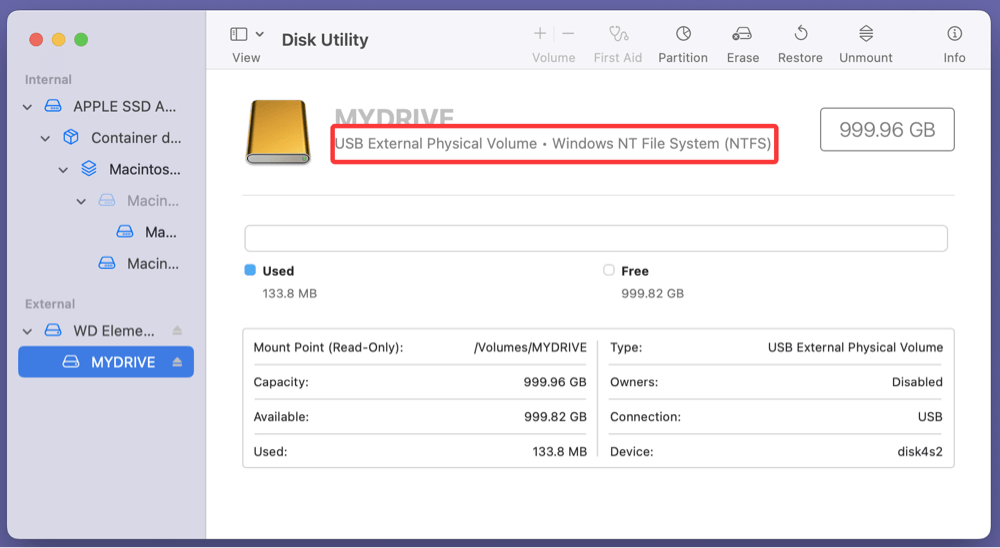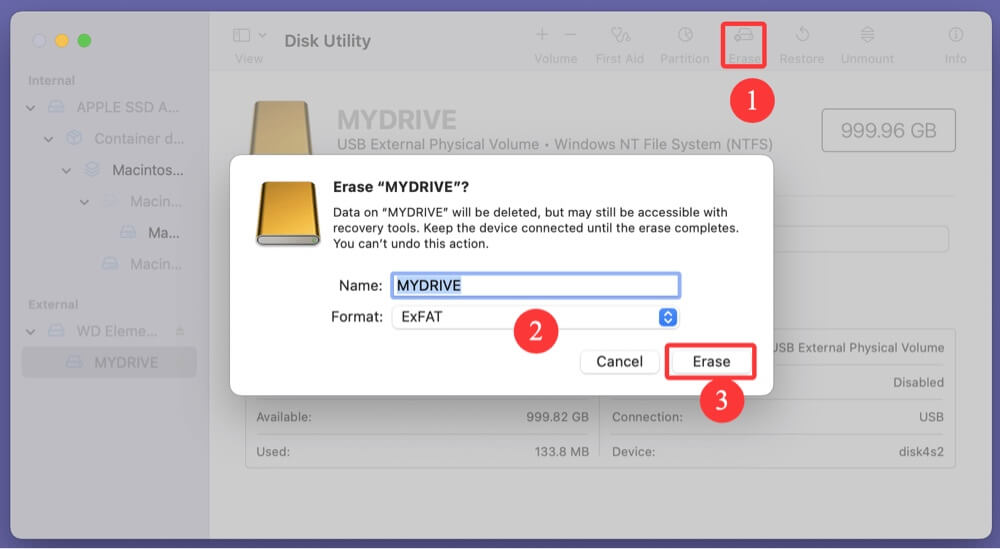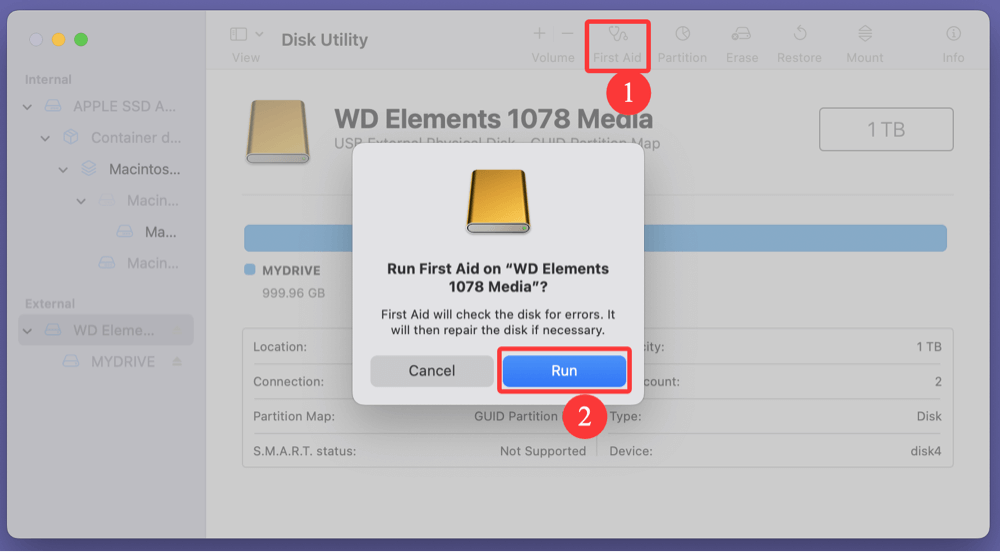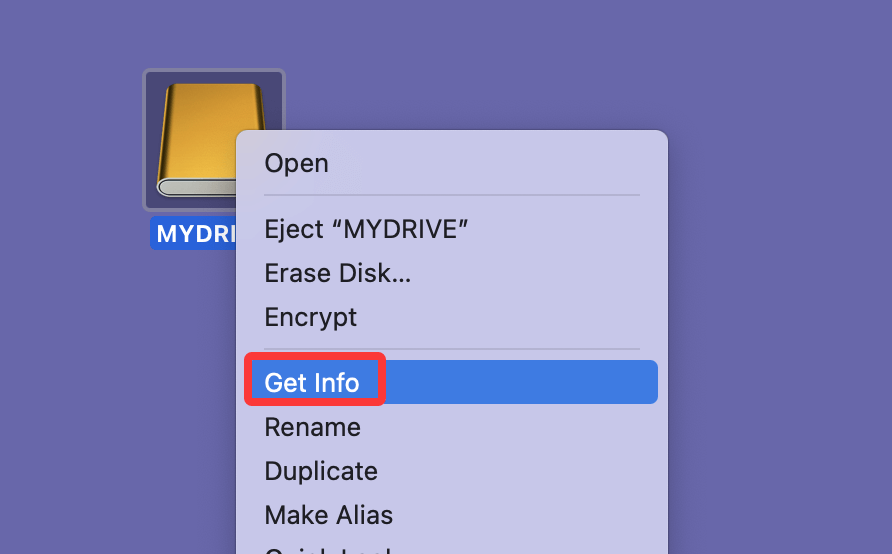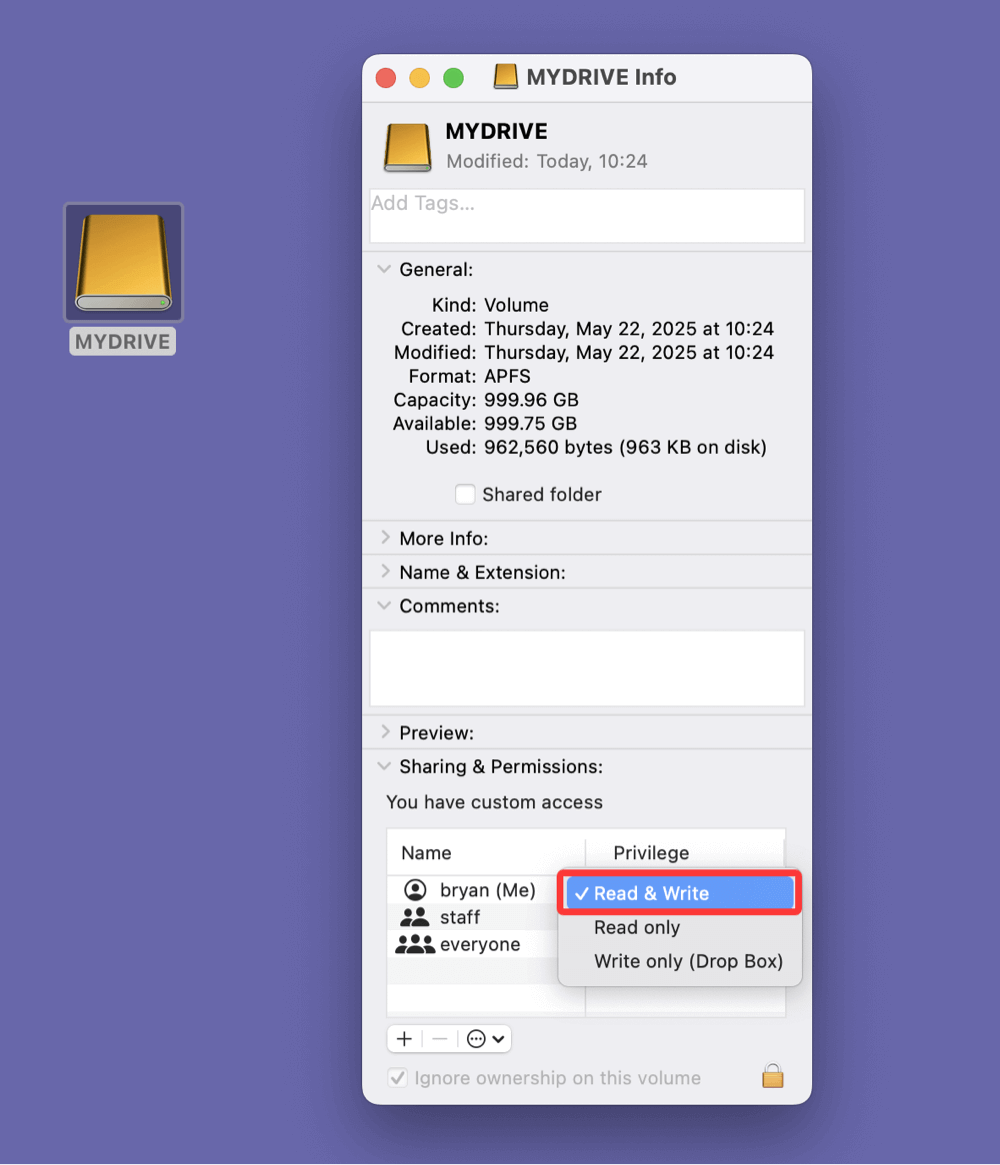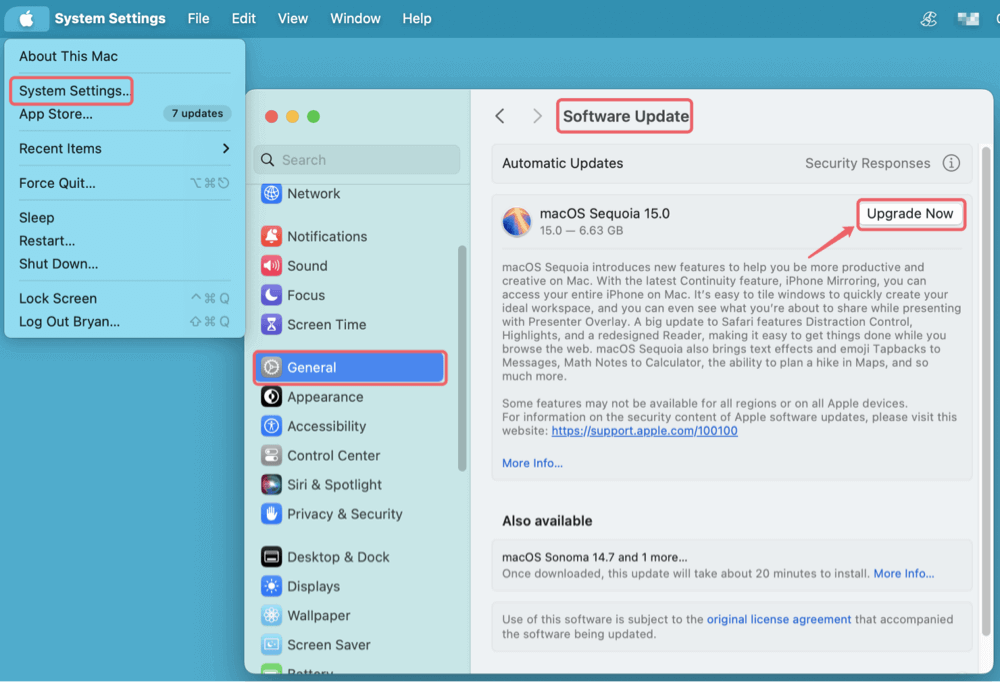Before we start: NTFS is not supported by macOS. If the external hard drive or USB flash drive has been formatted to NTFS file system, files can't be copied from your Mac to the drive. You can install an NTFS driver - such as Donemax NTFS for Mac to solve this problem. NTFS for Mac allows your Mac to read-write any NTFS drive on your Mac.
PAGE CONTENT:
Transferring files from a Mac to an external hard drive or USB flash drive is typically straightforward, but occasionally, users encounter issues where the files simply won't copy. Whether you're receiving error messages, experiencing system crashes, or noticing that nothing happens at all when you attempt a transfer, this guide will walk you through the potential causes and offer step-by-step solutions to resolve the problem.
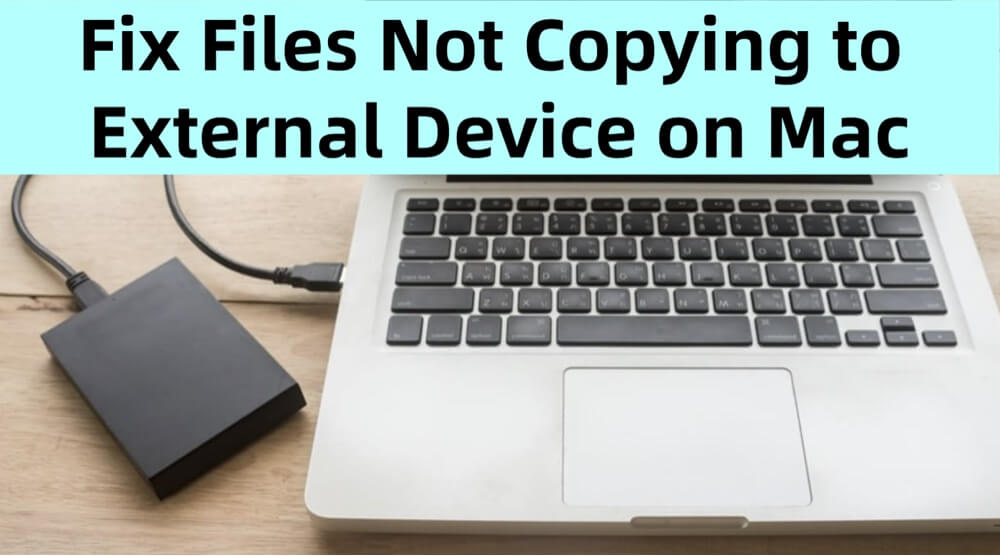
Common Symptoms of File Transfer Failure
Before diving into the solutions, let's identify some of the typical symptoms users may experience when files fail to copy from a Mac to an external storage device:
- Error Messages: You might see prompts like "The operation can't be completed because the item is in use," "Read-only file system," or "There isn't enough free space."
- Files Grayed Out: When you attempt to drag and drop, some files appear grayed out and can't be selected.
- Drive is Mounted but Unusable: The drive appears in Finder but doesn't allow file transfers.
- Drive Disconnects Midway: During transfer, the drive unexpectedly ejects or the file transfer freezes.
If any of these sound familiar, let's move on to understanding what could be causing the problem.
Main Reasons Why Files Won't Copy from Mac to External Drive
1. Incompatible File System Format
One of the most common issues is that the external drive is formatted with a file system that macOS can't write to. Most notably, NTFS, the default file system for Windows, is read-only on macOS without third-party drivers.
2. Permission or Access Issues
macOS has strict security and permissions systems. If the user account doesn't have proper write permissions to the external drive, file transfer will be blocked.
3. Corrupted Drive or File System Errors
If the external drive has corrupted sectors or file system errors, macOS may restrict writing to prevent further damage.
4. File Size Limitations
Drives formatted with FAT32 can't accept files larger than 4GB. If you're trying to copy a video, installer, or ISO file that's larger, the transfer will fail.
5. Hardware Issues
Loose connections, damaged USB cables, faulty ports, or failing drives can also result in failed transfers.
6. macOS Bugs or Software Conflicts
Occasionally, background processes, macOS bugs, or software glitches (especially after system updates) can disrupt file transfers.
Step-by-Step Solutions to Fix Files Not Copying to External Drive on Mac
Now that we've identified the causes, let's walk through how to fix them.
1. Reformat the Drive If Necessary
How to Check Drive's File System:
- Open Disk Utility (Applications > Utilities > Disk Utility).
- Select your external drive from the left sidebar.
- Look at the format listed (e.g., NTFS, FAT32, exFAT, APFS).
![files not copying from Mac to external drive]()
File Systems:
- NTFS: macOS can read but not write.
- FAT32: Cross-compatible but has a 4GB file size limit.
- exFAT: Best for cross-platform use with no large file limitation.
- APFS or HFS+: macOS-native formats, ideal if the drive is only used with Macs.
How to Reformat:
Warning: Reformatting erases all data on the drive. Back up important files first.
- In Disk Utility, select the external drive.
- Click Erase.
- Choose a new name and format (exFAT is recommended for Mac and Windows use).
- Click Erase to reformat.
![files not copying from Mac to external drive]()
💡 Note: If you've lost important files due to erasing the drive, you can use data recovery software - such as Donemax Data Recovery to recover the erased files from your external hard drive, USB drive or SD card.
2. Install NTFS for Mac Software
If you regularly use the drive with Windows PCs and prefer not to reformat, you can enable NTFS write support on your Mac using third-party software.
Donemax NTFS for Mac is one of the best NTFS for Mac software. It can quickly and securely add NTFS support on Mac.
Step 1. Download and install Donemax NTFS for Mac on your Mac and ensure the NTFS external hard drive, USB flash drive or SD card is connected to the Mac.
Step 2. Open Donemax NTFS for Mac on your Mac, select the NTFS drive, click on Mount button.
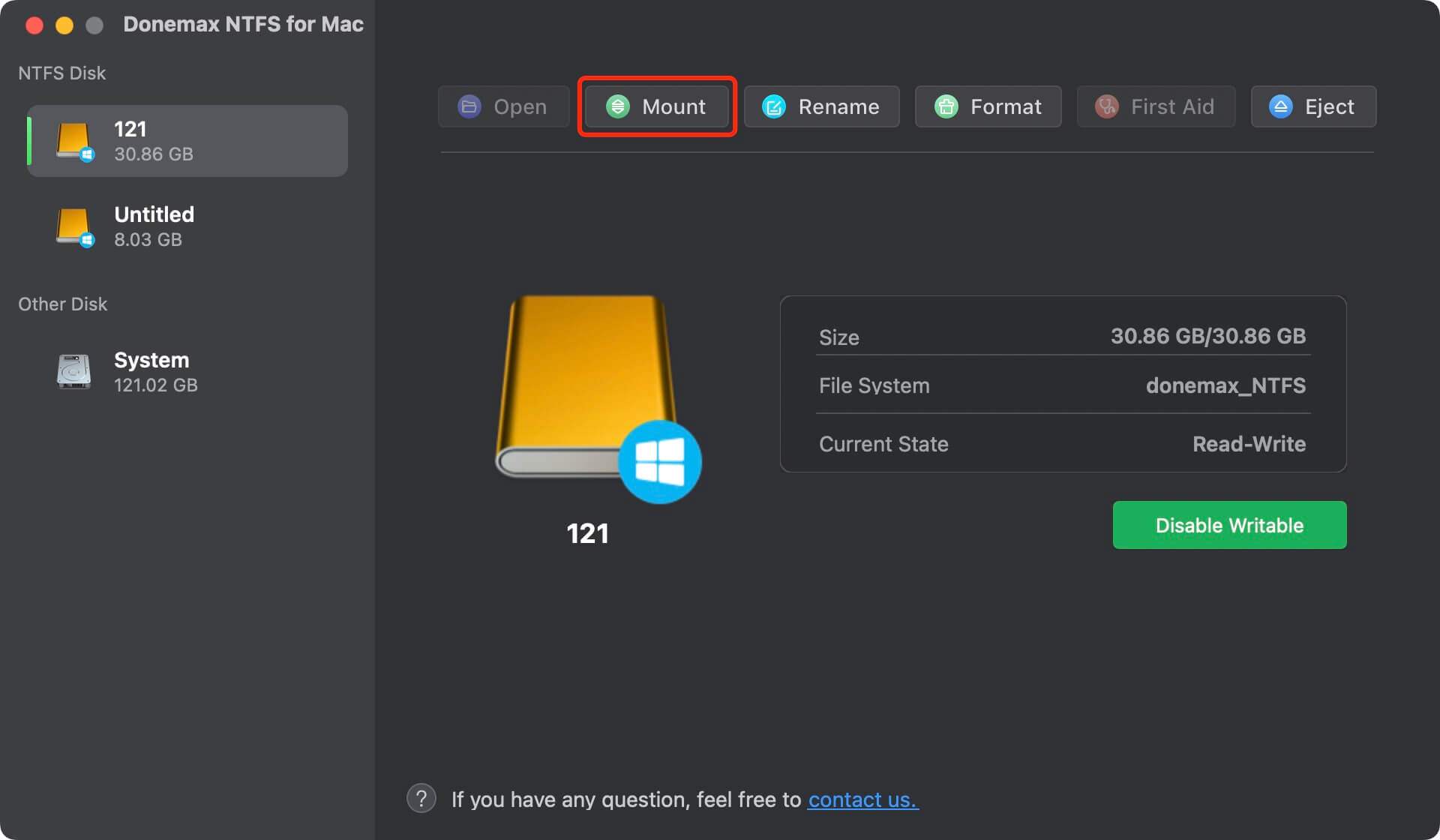
Step 3. Click on Enable Writable button, then you can write data to the NTFS drive on your Mac. It means you can copy files from your Mac to the NTFS external hard drive, USB drive or other storage device without any limitation.
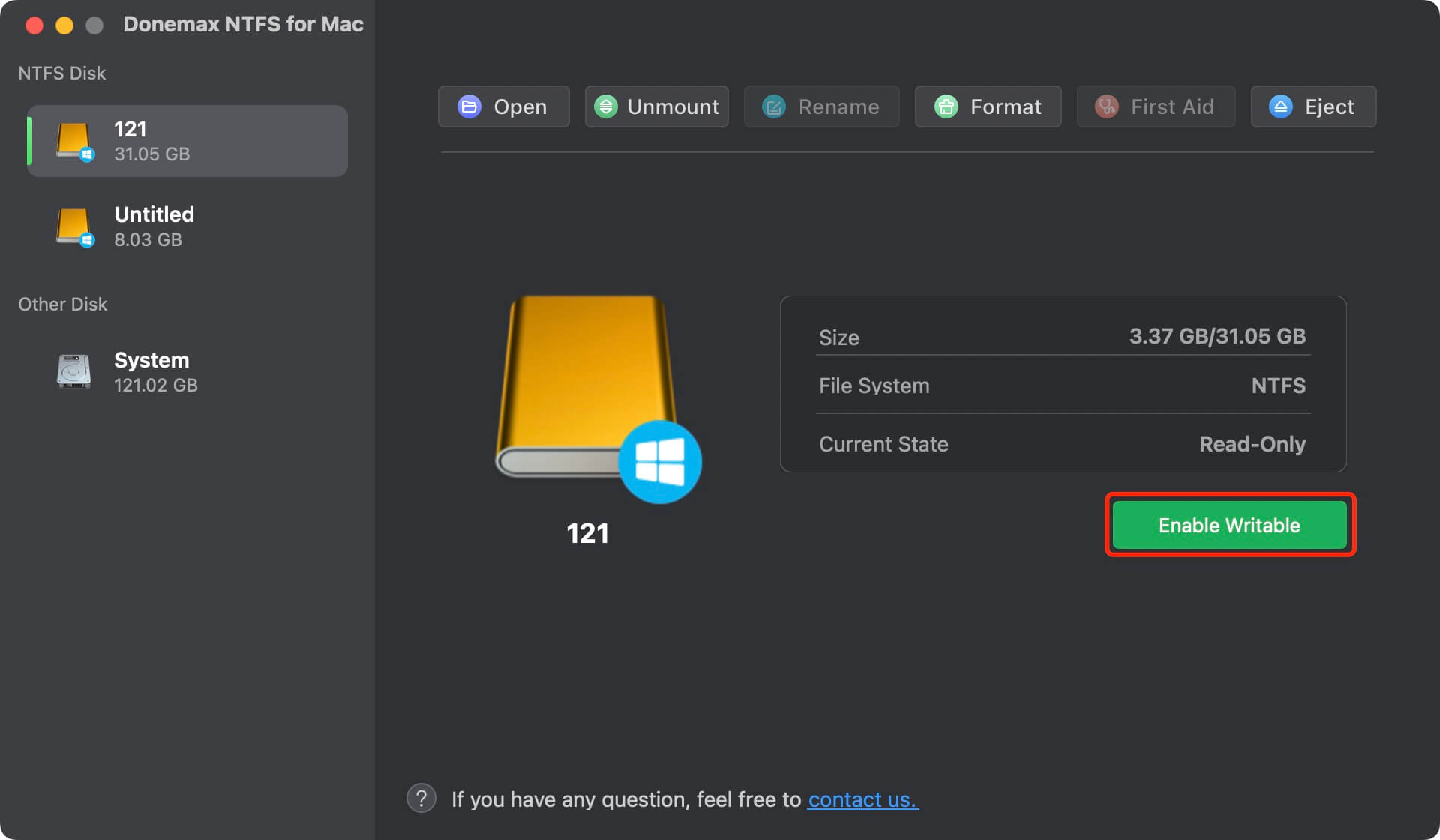
3. Repair the Drive Using Disk Utility
Corrupted file systems or damaged sectors can prevent write operations even if the drive appears to work.
Steps to Repair:
- Open Disk Utility.
- Select the external drive.
- Click First Aid and then Run.
![files not copying from Mac to external drive]()
This checks for and fixes errors in the drive's file system.
If First Aid Fails:
- You may see errors like "Disk Utility can't repair this disk."
- In that case, consider reformatting the drive or using professional disk recovery software to salvage your data.
4. Change File and Drive Permissions
macOS may prevent users from writing to certain drives due to permission settings.
How to Change Permissions:
- Open Finder and right-click the external drive > Get Info.
![files not copying from Mac to external drive]()
- At the bottom, look for Sharing & Permissions.
- 3Click the lock icon and enter your admin password.
- Ensure your user is listed with Read & Write privileges.
- If not, click the privilege setting and choose Read & Write.
![files not copying from Mac to external drive]()
Apply Permissions to All Contents:
- Click the gear icon (or "Action" button) below the user list.
- Choose Apply to enclosed items to ensure all folders and files inside the drive adopt the new permissions.
5. Split or Compress Large Files (for FAT32 Drives)
FAT32 has a file size limit of 4GB. Even if there's 100GB of space on the drive, you cannot copy a 5GB file to it.
Solution 1: Compress Files
- Right-click the file > Compress.
- If the compressed .zip file is still too big, split it.
Solution 2: Use Terminal to Split Files
split -b 2000m myfile.iso part_
- This splits the file into chunks of 2GB each.
- Later, use Terminal or a file-joining tool to merge them back.
Alternative Tools:
- Keka or Archiver can split/merge files easily with a GUI.
6. Use a Different USB Cable or Port
Why It Matters:
USB-C and USB-A ports may have different performance levels or be partially faulty.
Troubleshooting Steps:
- Try a different USB cable (especially a certified one).
- Use another port on your Mac (front vs. rear ports on Mac Pro or sides of MacBook).
- Connect the drive to another Mac or even a Windows PC to test behavior.
Red Flag:
If the drive disconnects randomly during transfers, the cable or port is likely faulty.
7. Update macOS
Apple constantly patches bugs and compatibility issues, especially with external hardware.
To Check for Updates:
- Go to System Settings > General > Software Update.
![files not copying from Mac to external drive]()
- If updates are available, download and install them.
Important:
Some older NTFS drivers or external devices might not function properly after major macOS updates (e.g., Ventura, Sonoma, Sequoia). Always check compatibility.
Advanced Troubleshooting (Optional)
If the above solutions didn't work:
Reset NVRAM/PRAM:
- Turn Off your Mac
- Immediately after turning it back on, press and hold Option + Command + P + R for roughly 20 seconds.
Reset SMC (Intel Macs only):
- Turn Off your Mac.
- For ten seconds, hold down Shift + Control + Option + Power.
- Turn your Mac off and on.
These resets can fix hardware-related glitches affecting USB drives.
Prevent Future File Transfer Issues on Mac
To minimize the chance of this issue occurring again:
1. Always Use exFAT for Cross-Platform Use
exFAT supports large files and is writable by both Windows and macOS.
2. Eject Drives Safely
Always right-click and choose Eject before physically removing a drive to prevent corruption.
3. Keep macOS and NTFS Tools Updated
Outdated drivers and macOS versions can lead to incompatibility.
4. Regularly Back Up Your Data
Maintain backups using Time Machine, iCloud, or a second external drive.
5. Avoid Using the Same Drive Between macOS and Windows Without exFAT
If you frequently switch between systems, only exFAT can reliably handle the transfers.
When to Seek Professional Help
If all else fails, the issue might be hardware-related or more complex.
Signs That You May Need a Technician:
- Drive doesn't mount at all.
- Drive makes unusual noises.
- Disk Utility can't recognize the drive.
- Disk Utility repairs always fail.
In such cases, consult an Apple Store or certified technician. If data is at risk, consider professional data recovery services or use data recovery software to get the lost data back.
Conclusion
Encountering issues when copying files from a Mac to an external drive or USB is more common than you might think, but the good news is, most problems are easy to fix. In many cases, the drive's file system is simply not compatible with macOS for writing, or permissions need adjustment. Whether it's reformatting the drive to exFAT, installing an NTFS driver, or repairing the disk with Disk Utility, these fixes can usually restore full functionality.
Just remember to always back up your important files before making significant changes, especially when reformatting or using third-party tools. With the right approach, you’ll be transferring files smoothly again in no time.
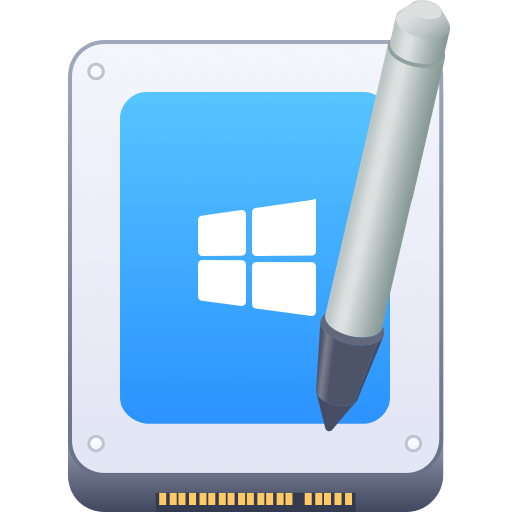

Donemax NTFS for Mac
An easy-to-use NTFS for Mac tool to help you enable writable for NTFS drives on Mac so that you can read-write NTFS drives on Mac without any limitation. It also can help you mount, format, repair, rename, open drive on your Mac.
Related Articles
- Dec 05, 20242025 Best WD NTFS Driver for Mac: A Comprehensive Guide
- Dec 14, 2024(Step-by-step Guide) Grant Full Read-Write Access to NTFS Drive on Mac
- Jul 01, 2025How to Use NTFS-3G on Mac?
- Oct 11, 2025Format A Hard Drive for Both Windows and Mac
- Dec 13, 2024How to Use NTFS Drive on macOS Sonoma: A Comprehensive Guide
- May 28, 2025How to Use a Windows NTFS Drive on Mac? 5 Solutions

Steven
Steven has been a senior writer & editor of Donemax software since 2020. He's a super nerd and can't imagine the life without a computer. Over 6 years of experience of writing technical solutions and software tesing, he is passionate about providing solutions and tips for Windows and Mac users.

Gerhard Chou
In order to effectively solve the problems for our customers, every article and troubleshooting solution published on our website has been strictly tested and practiced. Our editors love researching and using computers and testing software, and are willing to help computer users with their problems

